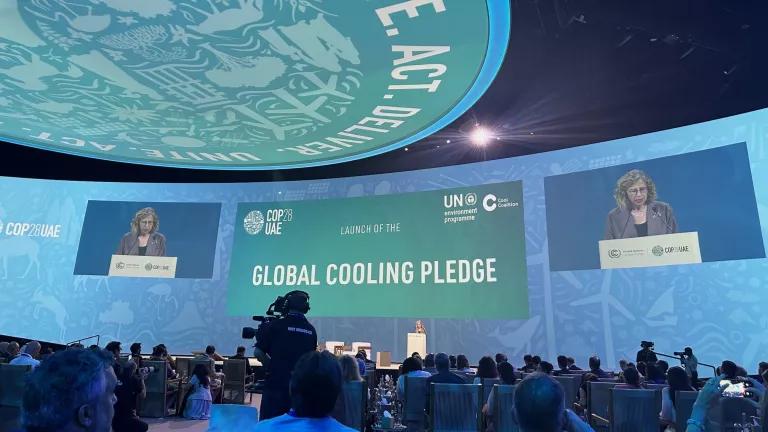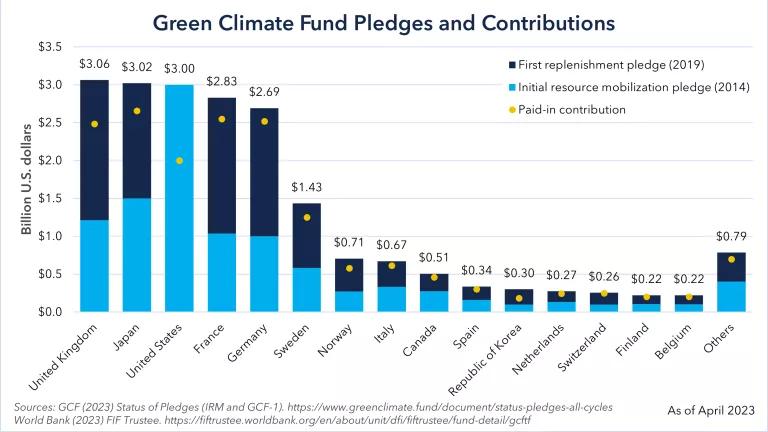Clearing the Air: Climate and Air Quality Solutions
Speaking at World Sustainable Development Summit (WSDS) in New Delhi, Indian Prime Minister Narendra Modi stated, “It is not the planet that is fragile. It is us.”
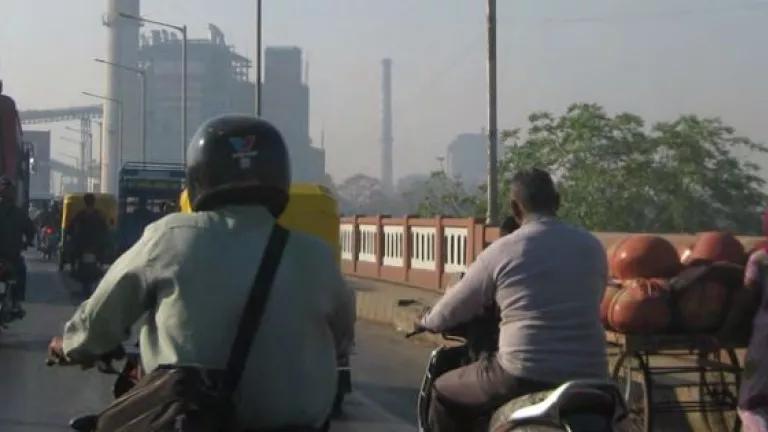
Vehicular traffic on India's busy roads.
Speaking at World Sustainable Development Summit (WSDS) in New Delhi, Indian Prime Minister Narendra Modi stated, “It is not the planet that is fragile. It is us.” While Prime Minister Modi was referring to fragile climate commitments made last fall, these words also ring true literally. This year WSDS focuses on how human well-being and the health of our planet are inextricably linked—through discussion on resilience and planetary health. Improving air quality is central to strengthening planetary health and addressing the climate crisis in India and around the world.
India has some of the worst air pollution in the world. Outdoor air pollution, largely from fossil fuel use, was responsible for nearly one million deaths in India in 2019. The high burden of death and disease significantly impacts on India’s emerging economy. Air pollution contributes to ecosystem degradation, worsens agriculture and crop yields, and impairs visibility.
Recognizing the need to combat dangerous air pollution, the Indian government launched the National Clean Air Program (NCAP) in 2019 to reduce outdoor air pollution (particulate matter) in over a hundred of the country’s most polluted cities. Now, NCAP is being scaled-up to a national mission “Clean Air for All,” which is significant, as demonstrated in the past by the National Solar Mission. Further, NCAP targets are expected to change from the original goal of a 20 to 30% cut (over 2017 levels) by 2024 to an enhanced 35 to 50% cut by 2025 to 2026.
Speaking at a WSDS session on “Planetary Health, Humanitarian and Equity Implications of Sustainable Development Policies,” NRDC President Manish Bapna focused on climate resilience and vulnerable communities, drawing on the Global Commission on Adaption. He highlighted that the inclusion of marginalized and vulnerable communities while adequately addressing environmental challenges is critical to India’s robust economic growth. Exacerbated by COVID-19, the last two years for many have been characterized by the widening of the inequalities of access to energy and resources, as well as the increasing burden of the climate crisis and air pollution.
Efforts to achieve India’s ambitious national renewable energy targets and widespread transportation electrification, address both the growing climate crisis and public health threats of air pollution. Mr. Bapna concluded with the positive news that international experience shows how addressing air pollution is not only achievable, but economically beneficial. Environmental policies in California, U.S. serve as a model for other cities and countries, including developing nations. Prioritizing strategies and resources for clean air over decades has eventually been repaid in terms of averted health costs and greater economic productivity—the state alone is now a major global economy.
During the plenary session, a new issue brief, “Clearing the Air: Priority Pollution Control and Monitoring Strategies Based on Efforts in Ahmedabad,” was discussed. The issue brief prepared by NRDC, Indian Institute of Public Health, Gandhinagar (IIPH-G), and the Centre for Environmental Education (CEE) along with inputs fro local and international experts identifies priority pollution control actions for Indian cities under NCAP drawing from experiences in Ahmedabad and 10 other cities in India.
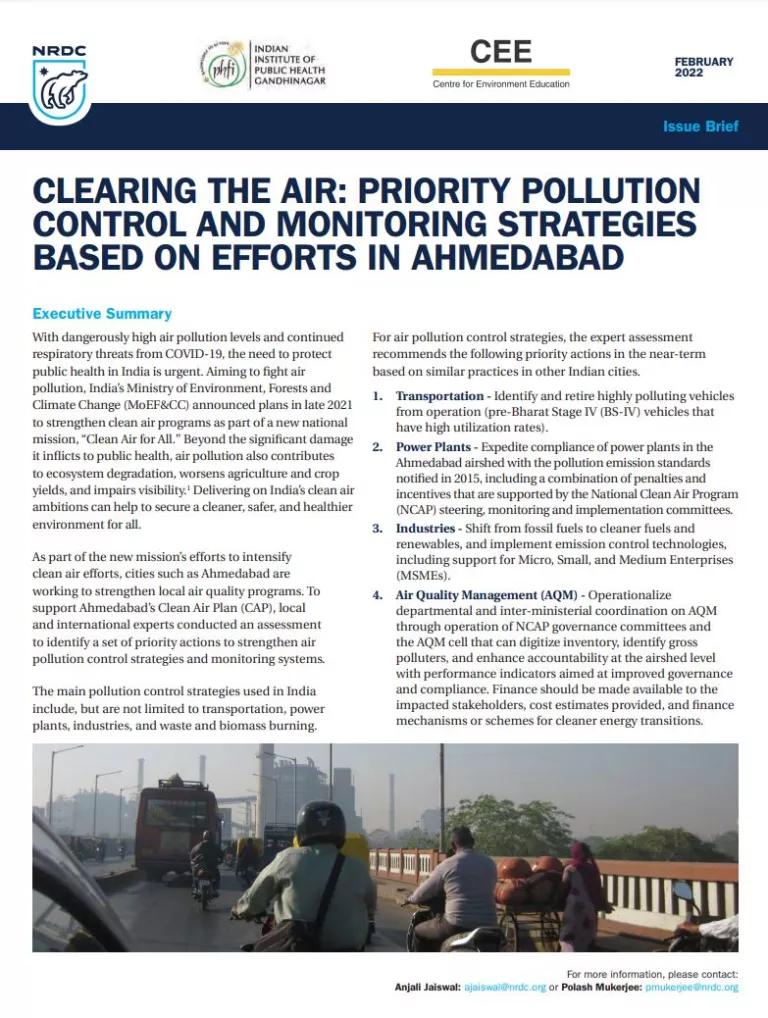
NRDC’s Polash Mukerjee spoke at a WSDS thematic track on “Evidence Based Action Planning to Achieve Clean Air” and discussed the issue brief in detail, highlighting the four priority strategies for improving air quality in Indian cities:
- Transportation - Identify and retire highly polluting vehicles from operation (pre-Bharat Stage IV (BS-IV) vehicles that have high utilization rates).
- Power Plants - Expedite compliance of power plants in the airshed with the pollution emission standards notified in 2015, including a combination of penalties and incentives that are supported by NCAP steering, monitoring, and implementation committees.
- Industries - Shift from fossil fuels to renewables and cleaner fuels, and implement emission control technologies, including support for Micro, Small, and Medium Enterprises (MSMEs).
- Air Quality Management - Operationalize departmental and inter-ministerial coordination on AQM through operation of NCAP governance committees and
the AQM cell that can digitize inventory, identify gross polluters, and enhance accountability at the airshed level with performance indicators.
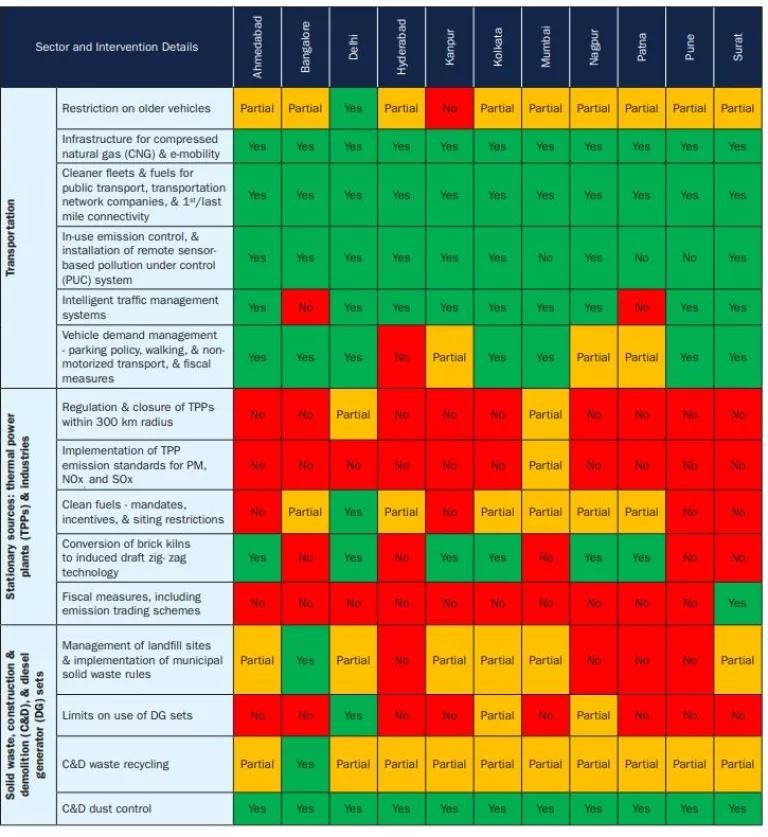
Assessment of City Air Pollution Control Strategies
The issue brief also calls for stronger monitoring measures needed measure reductions in pollutant levels to achieve the NCAP goals. NRDC and IIPHG along with the Gujarat Energy and Resources Management Institute (GERMI) and the Indian Institute of Tropical Meteorology (IITM) are working on an air pollution co-benefit applied-research study for the city of Ahmedabad. The study focuses on estimating the local air quality and public health benefits of climate response action plans at the city level in Ahmedabad.
As the Indian government moves the NCAP into “mission mode”, analysis and experiences from cities leaders is vital to increase ambition and achieve clean air. Air pollution as well as planetary health and the climate crisis require world leaders to act today to ensure a durable, equitable recovery that supports the most vulnerable populations.
NRDC India Clearing the Air Series https://www.nrdc.org/resources/clearing-air-review-of-city-actions-to-fight-air-pollution-india
NRDC India Air Quality and Public Health Series https://www.nrdc.org/resources/cutting-through-air-protecting-public-health-air-pollution-ahmedabad
NRDC India Health Benefits Series https://www.nrdc.org/resources/identifying-health-benefits-addressing-climate-change-ahmedabad-india
(This blog was updated to correct formatting.)
